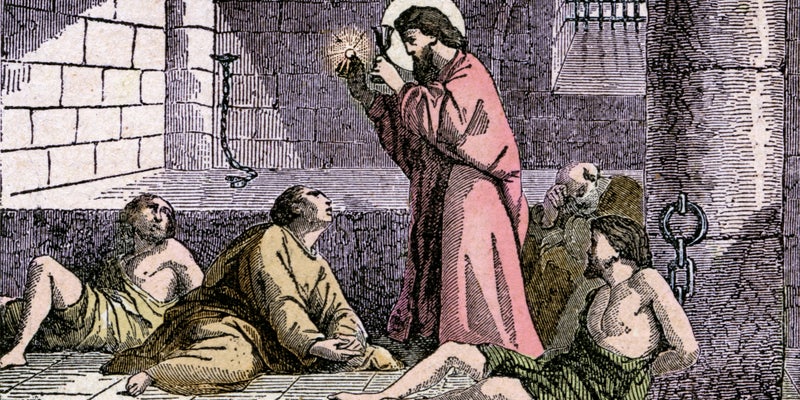Valentine’s Day holds a special place in the hearts of many around the world, celebrated every February 14 with the exchange of gifts, sweets, and heartfelt messages. This tradition of expressing love and affection dates back centuries and spans across various cultures. Today, from the United States to France, and from Mexico to Australia, people mark this day by showering loved ones with candy, flowers, and cards, all in the name of St. Valentine. But amidst the modern festivities and commercialization, the origins of Valentine’s Day are woven with historical, religious, and mythological threads, telling a story far richer than commonly known.
The enigmatic figure of St. Valentine, often associated with the holiday, remains a topic of mystery and legend. Historical records suggest the name could refer to at least three different martyrs from antiquity, their stories blending heroism, defiance, and romantic gestures. While some narratives describe St. Valentine as a priest who performed secret marriages against the decree of Emperor Claudius II, others detail his attempts to assist Christians in escaping Roman prisons. The most romantic tale features Valentine himself sending the first ‘valentine’ to a young girl he loved while imprisoned. Despite the different accounts of his life and death, St. Valentine’s enduring appeal as a symbol of romantic love is undeniable.
- <img src=”https://test-townsite.townsites.org/wp-content/uploads/sites/217/2025/01/6787d48e77cd0.jpeg” alt=”Lupercalia festival, an ancient Roman tradition, is a key precursor to modern Valentine’s Day celebrations.” data-type=”search”>
- Lupercalia festival, an ancient Roman tradition, is a key precursor to modern Valentine’s Day celebrations. Source: history.com
Before Valentine’s Day became synonymous with love and affection, its February roots trace back to the ancient Roman festival of Lupercalia. This pagan celebration, dedicated to fertility and the coming of spring, featured rituals that are a far cry from today’s exchange of chocolates and love letters. Priests of the Luperci would sacrifice animals before using their hides to gently strike women, a practice believed to enhance fertility. The festival also included a matchmaking lottery, pairing couples for marriage or temporary unions. It was in this context of fertility and pairing that the mid-February festivities began to intertwine with notions of romance and love.
The transformation from Lupercalia to St. Valentine’s Day is a fascinating case of cultural evolution, where a pagan ritual morphs into a Christian feast day. By the end of the 5th century, Pope Gelasius I officially replaced Lupercalia with St. Valentine’s Day, aiming to Christianize the ancient festival. Yet it wasn’t until the Middle Ages that the day became associated with romantic love, partly due to the belief that birds began their mating season on February 14. The literary works of Geoffrey Chaucer and others further cemented Valentine’s Day as a time for love and courtship, with the exchange of valentines and the emergence of romantic symbols like Cupid reflecting the holiday’s evolution into a celebration of love.

- 145 million Valentine’s Day cards exchanged annually, showcasing the holiday’s widespread embrace of affection. Source: history.com
With the rise of Valentine’s Day in England and France during the Middle Ages, the custom of exchanging love tokens and notes gradually took shape. The tradition of written valentines emerged in the 1400s, with the oldest known valentine being a poem from Charles, Duke of Orleans, to his wife. This blossoming tradition reflected a broader trend of romantic expression, further popularized by figures like King Henry V. The introduction of printed valentine cards in the 18th century, propelled by advances in printing technology and cheaper postage, marked a significant shift towards the commercial Valentine’s Day we recognize today.
The symbol of Cupid, often depicted as a cherubic figure with a bow and arrow, bridges Valentine’s Day with ancient mythology. Originating as the Greek god Eros, Cupid’s evolution from a formidable figure influencing gods and men into the playful child adorning modern Valentine’s cards exemplifies the holiday’s ability to blend and adapt cultural symbols. This transformative journey, from solemn myths to light-hearted caricatures, mirrors the broader metamorphosis of Valentine’s Day from pagan ritual and Christian feast to a global celebration of love and affection.

- Geoffrey Chaucer, whose works contributed significantly to the evolution of Valentine’s Day into a celebration of romantic love. Source: history.com
In summary, Valentine’s Day has traversed a long and complex path, from its origins in the Roman festival of Lupercalia, through tales of martyred saints, to the widespread commercial and romantic celebration it is today. The day’s evolution reflects broader historical and cultural shifts, as ancient practices were reinterpreted through the lens of Christian tradition and, later, commercial innovation. As millions of people across the globe exchange gifts and messages of love every February 14, the legacy of St. Valentine and the ancient traditions from which the holiday emerged continue to resonate in modern celebrations of love and companionship.
